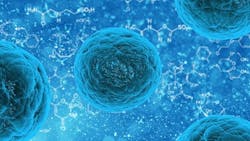Algae & Bacteria Could Help Treat Wastewater
Two unrelated studies could provide tools for treating liquid waste products from animal agriculture. According to Feedstuffs, both projects were developed for municipal wastewater treatment.
In one study from the University of Arkansas, environmental engineers discovered that Chlorella vulgaris, a single-celled freshwater algae species, effectively removes pollutants from wastewater even at fluctuating levels.
According to Feedstuffs, the study indicates that C. vulgaris continues to remove harmful elements like nitrogen and phosphorus from wastewater after one type of pollutant is depleted. Some algae require nitrogen and phosphorous to be present to function, which can limit its effectiveness in wastewater treatment.
“One of the factors that significantly impacts algal wastewater treatment is nutrient availability,” said Wen Zhang, associate professor in the University of Arkansas department of civil engineering. “What is the ideal range of nitrogen-to-phosphorus mass ratio for algal growth? Because previous research failed to identify this, the efficacy of algal treatment has been difficult to predict or optimize.”
According to the University, wastewater quality fluctuates dramatically pointing out that Zhang’s study shows that C. vulgaris could survive even in the absence of either nutrient.
In the study, they grew the algae in synthetic wastewater under several nutrient-limiting conditions and in effluent from two wastewater treatment plants. They found that C. vulgaris removed both nitrogen and phosphorous after secondary wastewater treatment in all levels or ratios of nutrients tested.
In a different study, European researchers developed a full-scale application of an eco-friendly technology that treats sewage water with zero energy costs.
“In 2010, when I discovered the beauty of constructed wetlands, I decided to apply my knowledge on microbial electrochemical technologies,” said professor Abraham Esteve-Núñez from the University of Alcalá in Madrid, Spain.
Esteve-Núñez improved traditional filter systems using conductive material to fill the wetlands. This acts as physical supports for bacteria that produce electricity when breaking down organic waste.
The system avoids clogging the biofilters with sediment and the result is low biomass. The bacteria remove pollutants from the wastewater, and after electro-oxidative treatment, the process produces water that is free of pathogens and suitable for irrigation.
“We will treat not only domestic sewage but also industrial wastewater. Instead of sending it to general municipality water treatment, companies will have a sustainable tool to treat it on site and reuse the clean water for their own purpose,” Esteve-Núñez said.
